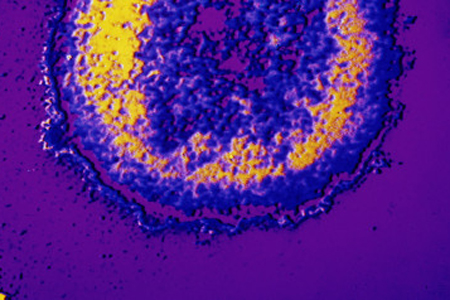
Each year Sept. 27 marks Gay Men’s HIV/AIDS Awareness Day. Because of advances in treatment, AIDS is a relic of the last century in many people’s minds. Few people who came of consciousness since 1996, when highly effective antiretroviral therapy first became widely available, remember the bad old days of major losses of HIV-infected people, who were often highly visible in urban epicenters because of severe wasting and disfiguring skin lesions.
This is some of the good news. HIV is treatable, and full-blown AIDS is increasingly uncommon, but that is only part of the story.
There are now more than 1 million Americans living with HIV, and around 200,000 remain unaware of their infection. A larger number are not stably engaged in care. Moreover, more than 50,000 Americans have become newly infected with HIV each year for more than a decade, so the actual number of people living with HIV in the U.S. continues to increase.
The epidemic is increasingly affecting people of color, particularly African Americans and especially younger people. Gay and bisexual men are greatly impacted as well, with male-to-male sexual transmission accounting for more than half of new infections. A recent six-city study that The Fenway Institute participated in enrolled black men who have sex with men and transgender women and found that the overall rate of new infections exceeded 5 percent annually. The epidemic is not evenly distributed. It is more common in cities on both coasts and in towns in the South. In Washington, D.C., one in seven black men, independent of sexual orientation or injection drug use history, is infected with HIV.
Why is this happening? There is no simple reason, but some key factors are relevant. Biologically, anal sex is a more efficient way of transmitting HIV, since the gut contains more cells that can avidly bind the virus. This does not mean that vaginal sex is without risk, just that it is less efficient for HIV transmission than anal sex. Individuals who are depressed (sometimes because of social disapproval of their lifestyle), who use drugs (sometimes to forget societal stigma), or who have experienced early life stresses (including abuse) are often less capable of engaging in self-protective behaviors. There are social factors; for example, people are more likely to choose partners within their community, concentrating HIV in black communities and among men who have sex with men. There are structural factors too. Poor people have less social mobility, further concentrating HIV infection within geographically restricted areas.
So why should anyone care? First of all, this is an unprecedented time. In the past few years it has been shown that antiretroviral drugs work best if started when individuals are asymptomatic, before their immune systems fail. A secondary benefit of early treatment is that people whose HIV infection is suppressed are less likely to transmit HIV to others. Additionally, recent studies have found that HIV-negative at-risk persons who use some of the same antiretroviral medications for prevention (like taking pills to prevent malaria when traveling in endemic areas) as pre-exposure prophylaxis are much less likely to become infected.
If we do nothing to curb the epidemic, it means that 50,000 more Americans will become HIV-infected annually, that some will eventually develop AIDS and die from a treatable disease, and that almost all others will eventually need to be on lifelong treatment that currently runs about $15,000 a year for the medication alone.
So what can you do? First of all, know your HIV status. A task force within the U.S. Department of Health & Human Services recently called for HIV screening for all Americans aged 15 to 65. In addition, the 2010 Affordable Care Act (aka Obamacare) increased coverage for HIV screening for most Americans. The HIV test is easy to do and highly reliable. Individuals who find out they are infected can be referred for care and support programs and are less likely to engage in behaviors that may transmit HIV to others. Individuals who are not infected can learn about ways to stay uninfected and can be retested later if they engage in activities that put them at risk. You can find an HIV testing center near you by visiting hivtest.cdc.gov.
Second, we all live in communities and are part of networks. Encourage your loved ones, family and friends to be tested and to talk about their risks. More than 30 years after this global pandemic appeared, we are at a point where we can substantially turn the tide in the U.S. and throughout the world. If we ignore the persistence of the virus, because of the stigma associated with the behaviors that can transmit it, we are part of a conspiracy of silence that will ensure that the epidemic continues to grow. The virus is the problem, not sex, not people who are infected with HIV or those at risk, and the more we normalize the conversation without value judgments, the quicker we will identify those who can benefit from the highly effective treatments and prophylaxis currently available.